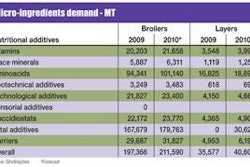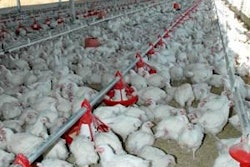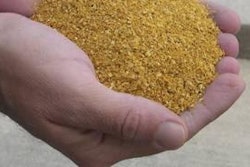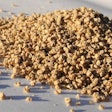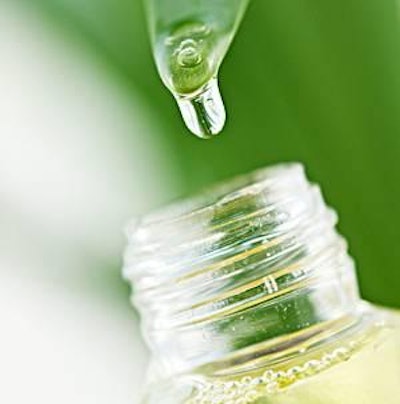
Coccidiosis is recognized as the costliest parasitic disease for the poultry industry worldwide, with estimated total annual costs reaching $800 million, when the costs of prophylaxis, medications and losses of productivity due to mortality, morbidity, and lowered feed conversion are taken into account. Estimates of the global cost of its prevention in chicken alone stand at $300 million a year.
Among the multiple species of this intracellular parasite, the two most common types affecting poultry production worldwide are Eimeria acervulina, which causes upper intestinal coccidiosis, and Eimeria tenella (caecal coccidiosis), which has a morbidity rate of 10-40% and mortality of up to 50%.
Because coccidia damage the intestinal epithelium, feed digestion is impaired, resulting in losses in performance through reduced weight gain, feed efficiency and temporary reduction of egg production in layers.
A need for alternative solutions?
An outbreak of coccidiosis in a flock will depend on several factors which can be controlled to varying degrees. It is usually the result of a breakdown in the balance between three elements: the parasite, the host (chickens selected for their zootechnical performances are particularly sensitive to coccidia), and the environment (intensively-reared birds are more vulnerable to coccidiosis). A coccidia control program should take into account all these elements, starting with hygiene and housing management practices.
Much work has also been carried out on the role of dietary factors: the influence of nutrients and micronutrients (vitamin K, A, selenium) has been widely studied, as have the feed form and origin (maize could be more favorable than wheat). However, control of these factors is not sufficient on their own and, in commercial poultry production, additional coccidia control solutions are often necessary.
For decades, ionophores, with their multi-species activity and cost-effectiveness were the method of choice to fight coccidiosis. Their widespread use, however, has lead to drug-resistant species, and concerns about residues in meat.
The rapid development of multi-drug resistant pathogens, increasing consumer pressure for natural food, as well as regulatory change (since 2006 antibiotic growth promoters have been banned in the European Union), have all put an end to the development of new drugs and triggered the search for alternative solutions.
Much research has been conducted on immunization, and vaccination with live attenuated Eimeria is proven to be effective, while recombinant vaccines are still in development. However, unlike anticoccidials, immunization is species-specific and often associated with transient loss of performance, and it remains costly.
Over recent years, scientific publications and various production trials that explore the potential of certain plant based alternatives to control coccidia have been revisited.
In the search for alternatives, the initial selection of natural compounds is often empiric, but the thorough understanding of Eimeria biology (with some 90 years of intensive research, avian coccidia is one of the most advanced fields of microbiology!), combined with research into the biological activity of plant extracts, has allowed the identification of various modes of action, with either direct or indirect antiparasitic activity.
Direct antiparasitic effects
Certain essential oils with documented broad anti-microbial activity will have a direct antiparasitic effect. Oregano, for example, has been shown to be effective against E tenella, while a separate study has shown the effect of a blend of essential oils on E acervulina.
Essential oils contain known active ingredients, including phenols, aldehydes, terpenes, and oxides, which have a direct anti-parasitic effect. One of their key modes of action is targeted against microbial membranes and cell walls, which are then disrupted.
This specificity confers them a broad spectrum of activity, targeting gram+ and gram– bacteria, yeasts or fungi, as well as free coccidia, the form present in the intestine lumen. It has been demonstrated that the supplementation of chicken feed with certain plant extracts prior to pathogen challenge (E acervulina and E tenella), reduces the detrimental effect of the parasite on weight gain and reduces lesion scores, six days after the challenge.
It has also been shown that neem fruit extract could be more effective than ionophores in reducing mortality and fecal oocyst count following multi species Eimeria challenge. Other effective plant extracts have also been reported, although their modes of action have not been elucidated, but could consist of a combination of various pathways.
Indirect antiparasitic activity
Compounds with indirect antiparasitic activity are able to help the host’s organism to resist or fight infection or recover from tissue damages. Two main types of biological activity can be distinguished:
i) Immunostimulation. Some plant-based polysaccharides, in particular, exert an immunostimulating effect. By mimicking an infectious agent, certain polysaccharides are able to trigger the non-specific immune response. For example, it has been shown that immunoactive polysaccharides from mushrooms and plants have a synergistic action with vaccination.
ii) Immunomodulation. Certain plant extract with antioxidant or anti-inflammatory properties can have an immunomodulating effect.
Antioxidants: an infection such as coccidiosis leads to the production and release of nitric oxide radicals (NO•) by macrophages. If there is a disequilibrium between the body’s endogenous antioxidant defenses and the production of free radicals, the animal is subject to oxidative stress. This leads to reduced performances and can also limit the response against infections in the case where immune cells are damaged.
The acute phase of primary coccidial infection, (5-7 days post infection) which corresponds to oocysts shedding, is usually a period of important tissue damage: this is known to be associated with important oxidative stress. In this case, an intake of plant-based exogenous antioxidant capable of scavenging free radicals can help to limit oxidative stress and prevent the damage caused by free radicals on cell lipid and protein constituents, and also on genetic material.
Various natural compounds, known for their antioxidant properties, have been shown to be beneficial in the fight against coccidia: grape seed proanthocyanidins protect against E tenella, with positive effects on body weight, mortality and lesion scores.
Certain antioxidant vitamins and minerals have also shown benefits against Eimeria infection, including selenium, vitamins A and E. A Korean study has shown that green tea extract reduced oocysts shedding in E maxima infected broilers, however, there was no improvement in body weight. An experimental pathogen challenge study (E tenella and E maxima) has shown that chicken fed a supplement with a natural antioxidant alone had a positive effect on weight gain, lesion scores as well as NO• synthase activity.
Anti-inflammatory properties. Inflammation is a physiological mechanism which enables the recruitment of immune cells to the infection site. But, as is also the case with free radical production, if there is an over-reaction, it can lead to tissue damage at the site of infection. For example, curcumin, one of the key active ingredients in turmeric has been largely documented for both its antioxidant and anti-inflammatory properties. It represents a very potent natural ingredient in the fight against the consequences of infectious agents.
When it comes to plant extracts vs. isolated compounds, such as vitamins or antioxidants, more work still needs to be done.
The plant world is extremely diverse, and many of the plants with known health benefits are rich in bioactive compounds - more than 140 compounds have been isolated from neem tree alone.
In combination, they could result in a variety of modes of action to fight against Eimeria. In practical terms, it could also be interesting to associate compounds with known anti-parasitic action, such as essential oils, with antioxidant or immune-modulating ingredients, for a synergistic effect.


